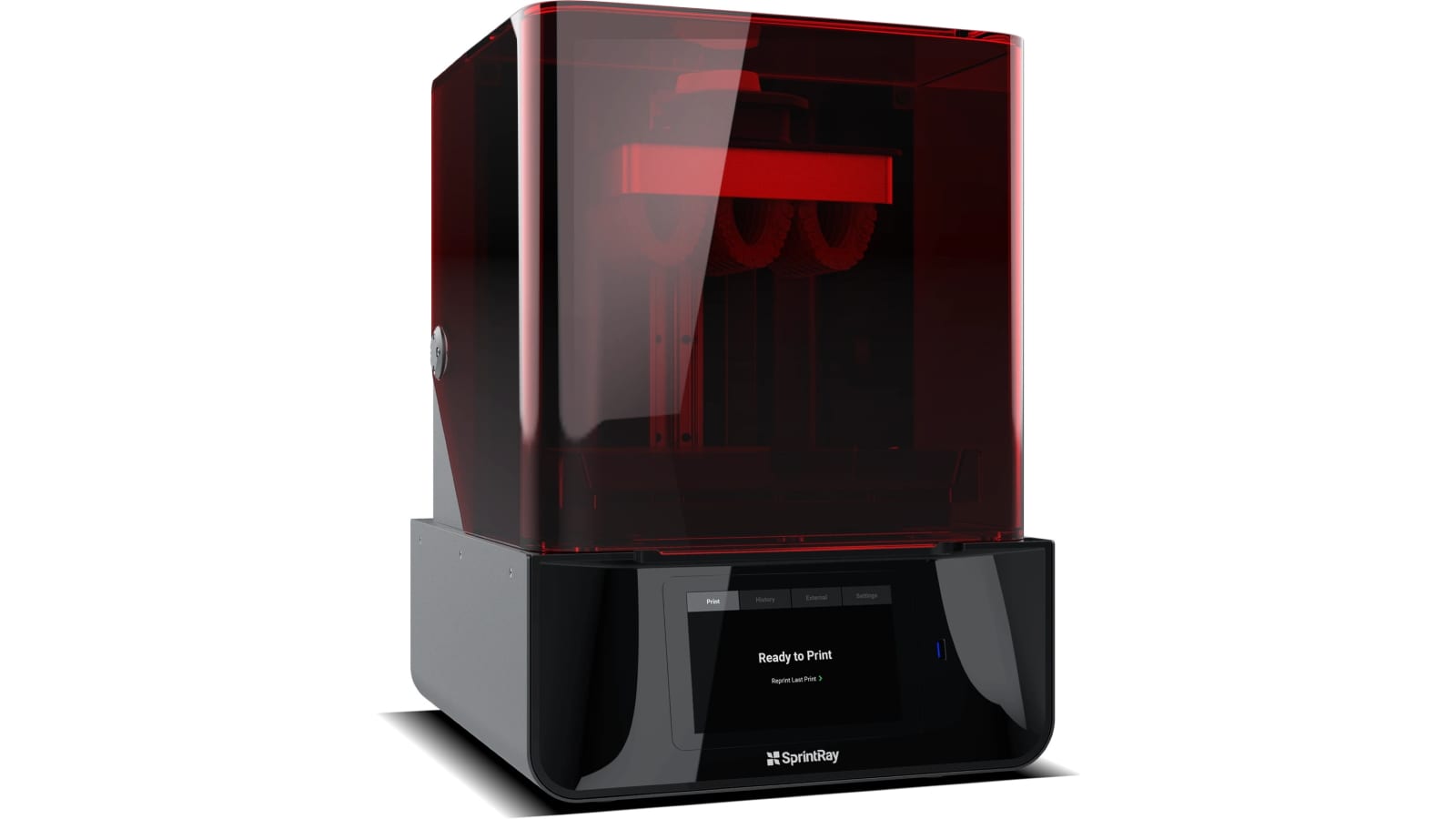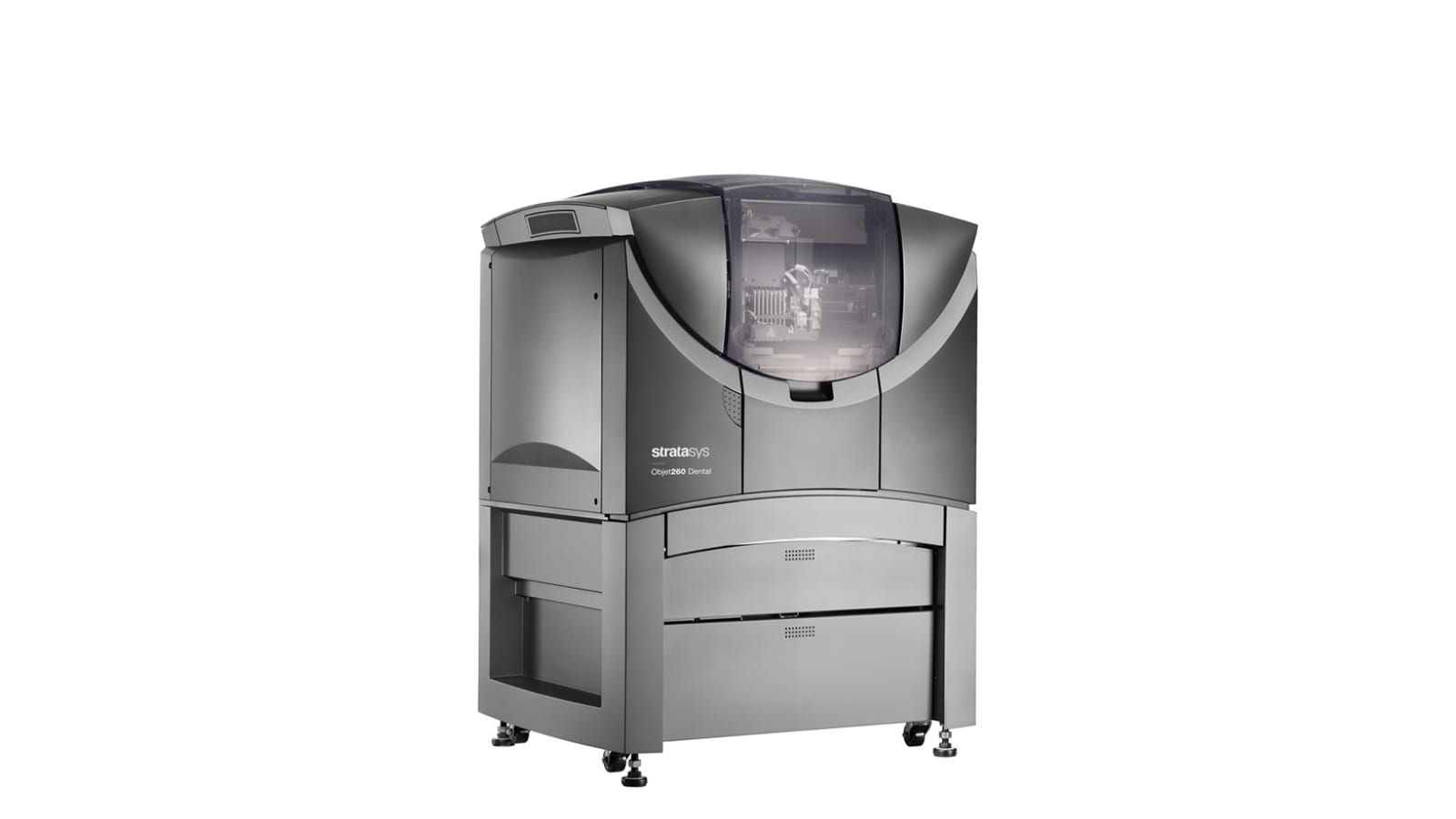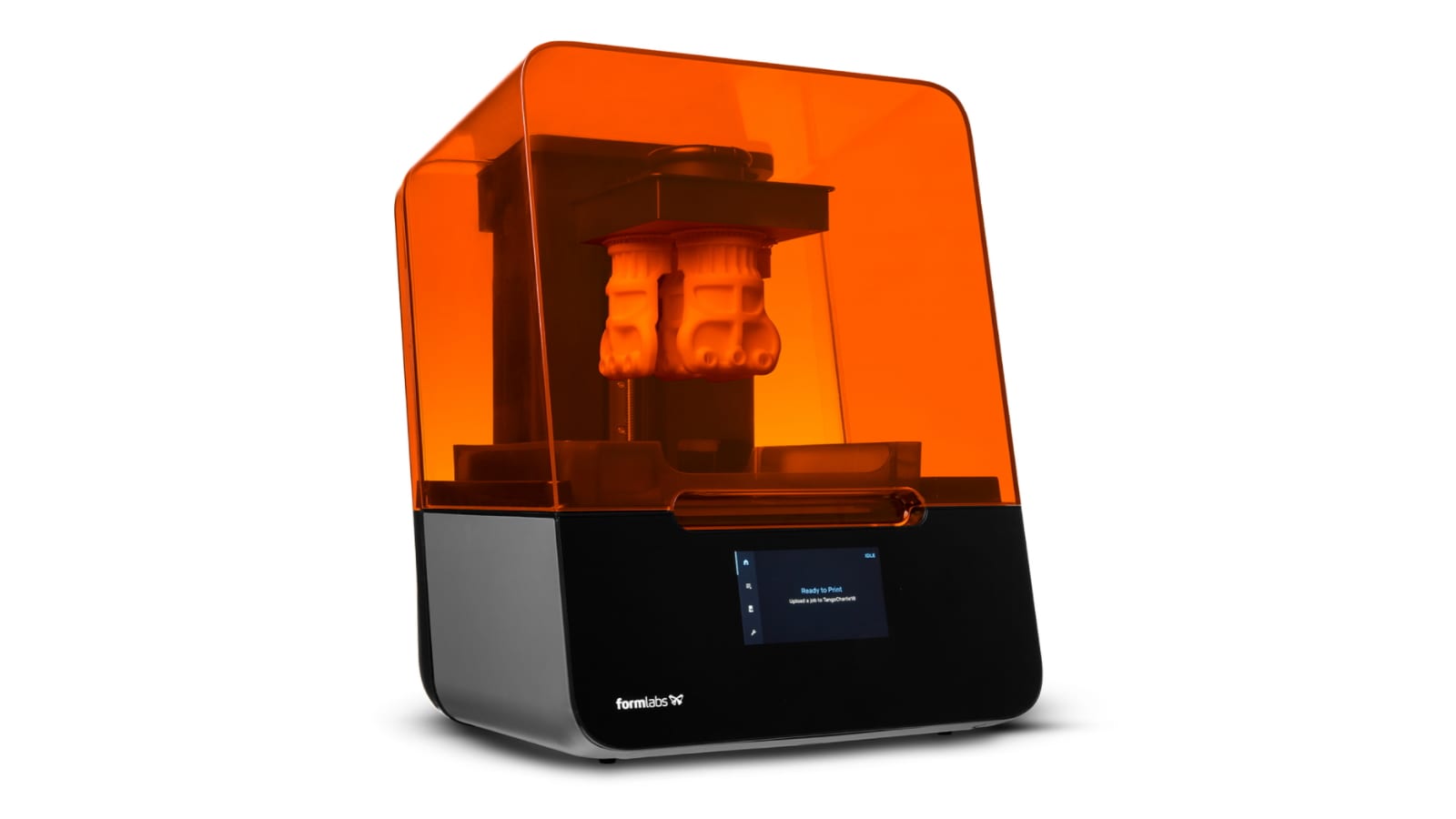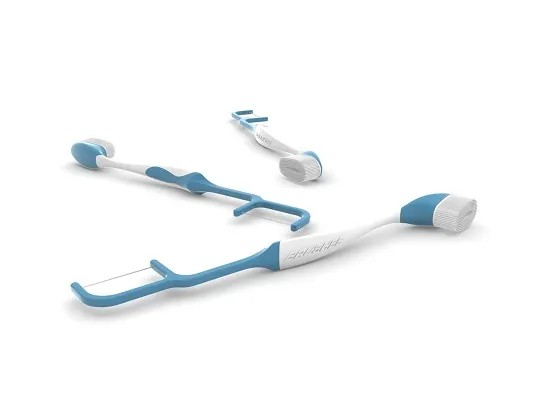3D Printing Basics and Understanding Market Terms
Patient-specific solutions have become more prominent within the past few years in dentistry; because there’s no one-size-fits-all solution for dental restorations. Many dentists and dental labs have come to resort to tech and savvy ways of treatments. 3D printers provide an ideal fit for dentistry because it allows dentists to make surgical guides, crowns, implants, and trays quickly and cheaply. 3D printers remove the alginate impression process and replace that process with intraoral scanners, which create a digital impression file of the patient’s mouth, which can be uploaded into any software and then printed right then and there. 3D printers have, in recent years, become more affordable for all clinicians, creating new treatment plans for all patients.
Yet amid all the exciting developments in 3D printing, finding the right 3D printer for your practice can be tedious and vexing. Investing in a 3D printer requires a deep consideration into its parts and knowing what you desire from your office workflow. By understanding the components of any 3D printer you see on the market, you can gain a deep appreciation for the technology out there and know what you want in return.
Top 10 Dental X-Ray Supplies & Equipments
3D Printer Basics
3D printers require accuracy, speed, and ease to be effective in any office setting. Today, 3D printers operate with three different technologies that influence dental practices: Stereolithography (SLA) and Digital Light Processing (DLP).
- Stereolithography – SLA uses a laser beam across a print area, using liquid resin and solidifying it in specific areas to form and design. SLA printers direct the UV laser to the correct x and y coordinates to trace out the cross-section model, keeping the laser in constant motion and making it more suitable for printing multiple, large intricate parts in one go. SLA laser lights, however, are typically more expensive to replace and make the machine more expensive as a result.
- Low Force Stereolithography – A newer category of stereolithography, LFS reduces the strain of peeling the model from the resin tank by creating a more flexible tank and a scalable light processing unit. The tank contains film which bows gradually to reduce pressure built up during the extraction process. The LPU uses lights and mirrors to control the linear illumination of the laser light, directing it opposite of the building plane for more accurate parts.
- Digital Light Processing – DLP incorporates the same mechanics as SLAs and LFS but instead uses a digital processor as a light source to solidify the resin. The digital processor remains stationary and cures the resin a layer at a time. This creates a faster printing time and allows the operator to control the intensity of the light source on the resin. Because of its simpler design, the light source can be more easily replaced and costs less.
- Fused Deposition Modeling – Also known as an extrusion process, or FDM for short, FDM produces dental applications at a reliable rate by extruding melted filaments layer by layer and fusing them together, giving it a wide versatility with materials and a bigger budget. However, due to it being the most common form of 3d printing, it’s also the least accurate and requires more post-processing to fix imperfections.
When evaluating 3D printers, understanding how the light source works in each model is the key to finding the best 3D printer for your practice. Laser SLAs tend to draw the lines with the light. LFS printers minimize the laser spot size when producing the product, and draw the model in smaller increments for more consistent accuracy. DLP printers use the projector screen to draw the layers by pixels, and the smaller the pixel size, the more accurate the end result is. Most modern printers have an intuitive design to them thanks to company’s and their reliable customer services, such as software tools, automatic resin dispensers, and even their own select solutions to wash off the solvent from the resin.
Top 5 Dental Surgical Instruments Manufacturers
1. Pro95 Printer by SprintRay

Product Description
The Pro95 Printer by SprintRay is a high-performance 3D printer designed specifically for dental applications. With more than twice the printing capacity of its predecessor, the MoonRay S, it allows dental professionals and lab technicians to produce multiple appliances in a single build with enhanced precision and ease.
Product Overview
This printer features cloud-connected software that automates workflows and simplifies the printing process, reducing the learning curve for new users. The integrated DLP projector and a print volume of 190 x 100 x 200 mm offer substantial output, while the minimum feature size of 95 microns ensures fine, detailed results. Its STEM (Selectively Textured Elastomeric Membrane) tank technology reduces resin adhesion for smoother, more reliable prints.
Key Features
Over double the capacity of the MoonRay S
Cloud-based software for automated workflow
Integrated DLP projector for precision printing
Large build volume: 190 x 100 x 200 mm
Minimum feature size: 95 microns
STEM tank minimizes adhesion and improves reliability
Magnetic safety sensors for added protection
Compatible with a wide range of dental resins
Common Applications
Printing dental models and appliances
Creating aligners, retainers, and surgical guides
Use in dental clinics and laboratories
Batch production of customized restorations
Technical Specifications
Manufacturer: SprintRay
Product Type: Dental 3D Printer
Build Volume: 190 x 100 x 200 mm
Minimum Feature Size: 95 microns
Tank Technology: Selectively Textured Elastomeric Membrane (STEM)
Connectivity: Cloud-connected software
Safety: Magnetic lock sensors
Compatibility: Multiple resin types
Customer Ratings
Rating: 4.9 out of 5 (Based on verified reviews)
Customer Feedback
Exceptionally accurate results
User-friendly interface and software
Ideal for high-volume dental practices
Fast, clean, and reliable print process
Top 5 Handpieces in Dentistry. High-Speed and Slow-Speed
2. SolFlex 170 by Voco Dental

Product Description
The SolFlex 170 by Voco Dental is a compact, high-efficiency 3D printer tailored for orthodontic practices. Engineered for speed and precision, it includes intelligent sensor technology to monitor and adjust peeling forces during the printing process, significantly reducing overall print time by up to 40%.
Product Overview
Utilizing advanced DLP technology with a 385 nm chip, the SolFlex 170 produces dental appliances with high clarity, removing yellow tinting common in other printers. Its silicone-based Flex-Vat build tray reduces peeling forces and minimizes the need for excessive support structures, streamlining workflow and improving output quality. The system’s open print standard ensures compatibility with a wide range of materials and includes Voco’s Pyramis software for optimized control.
Key Features
Sensor-monitored laser optimizes peeling forces
Reduces print time by up to 40%
DLP technology with 385 nm chip for improved clarity
Silicone Flex-Vat tray for less peeling force and fewer supports
Compact size ideal for small practices
Open print standard for material flexibility
Includes Pyramis printing software
Common Applications
Orthodontic appliance fabrication
Clear aligners and dental models
Rapid prototyping in compact dental offices
Daily use in high-volume orthodontic workflows
Technical Specifications
Manufacturer: Voco Dental
Product Type: Dental 3D Printer
Technology: Digital Light Processing (DLP)
Light Source: 385 nm chip
Build Tray: Flex-Vat silicone tray
Print Optimization: Sensor-monitored peeling force adjustment
Software: Pyramis included
Material Compatibility: Open print standard
Customer Ratings
Rating: 4.8 out of 5 (Based on verified reviews)
Customer Feedback
Remarkably fast print speed
Excellent clarity and precision
Works well with various resin types
Perfect size and performance for smaller clinics
Top 5 Dental Instrument Distributors
3. Connex3 Objet260 by Stratasys

Product Description
The Connex3 Objet260 by Stratasys is a highly versatile 3D printer designed to streamline dental and laboratory workflows using advanced PolyJet technology. It is capable of printing three different materials simultaneously, allowing for complex, multi-material dental models and prototypes to be produced in a single print job.
Product Overview
Using a material jetting process, the Objet260 deposits photopolymer droplets and instantly cures them with UV light, layer by layer. The printer features multiple print heads that also jet a gel-like support material to improve surface finish and minimize peeling. With its ability to handle hundreds of material combinations—ranging in color, rigidity, and translucency—it’s a go-to solution for detailed and realistic dental appliance modeling.
Key Features
PolyJet technology allows multi-material printing
Prints three materials in one build
Supports hundreds of color and material combinations
Material jetting with UV light solidification
Uses gel support material for cleaner curing and minimal peeling
Ideal for dental, medical, and design prototypes
Includes dedicated operating software
Common Applications
Multi-material dental model creation
Color-accurate prototypes with variable translucency
Detailed restorative and orthodontic planning
Educational and research applications in dental labs
Technical Specifications
Manufacturer: Stratasys
Product Type: PolyJet 3D Printer
Technology: Material Jetting with UV curing
Material Capacity: Prints three materials simultaneously
Support Material: Gel-based support for enhanced surface quality
Build Axis: X-axis multi-head printing
Software: Dedicated proprietary software included
Material Compatibility: Hundreds of rigid, flexible, and translucent options
Customer Ratings
Rating: 4.9 out of 5 (Based on verified reviews)
Customer Feedback
Incredible material flexibility and detail
Produces lifelike dental models
Clean prints with minimal post-processing
Game-changer for multi-material prototyping
4. R. Pod by Arfona

Product Description
The R. Pod by Arfona is a fused deposition modeling (FDM) 3D printer specifically designed for dental applications, particularly the production of Valplast flexible nylon partial dentures. It offers an economical alternative to traditional dental manufacturing by utilizing widely available and cost-effective plastic filaments.
Product Overview
Engineered to maximize accuracy while minimizing material costs, the R. Pod focuses on the efficient extrusion of layers to create smooth and functional dental appliances. Its compatibility with FDA-approved Valplast resin ensures clinical reliability and flexibility in dental prosthetic production, making it ideal for practices and labs seeking low-cost, high-output 3D printing.
Key Features
Uses fused deposition modeling (FDM) technology
Optimized for Valplast flexible nylon materials
Compatible with inexpensive, widely available plastic filaments
Produces smooth, high-quality partial dentures
Cost-effective solution for dental appliance manufacturing
Streamlined for dental-specific applications
Common Applications
Fabricating flexible partial dentures
Printing Valplast appliances
Reducing lab and material costs in dental workflows
Use in dental offices and on-site prosthetic labs
Technical Specifications
Manufacturer: Arfona
Product Type: Dental FDM 3D Printer
Technology: Fused Deposition Modeling (FDM)
Material Compatibility: Valplast and other filament-based resins
Material Focus: Cost-effective plastic filament extrusion
Application Focus: Partial dentures and flexible appliances
Customer Ratings
Rating: 4.6 out of 5 (Based on verified reviews)
Customer Feedback
Perfect for Valplast denture production
Saves significantly on material costs
Simple operation with consistent output
Excellent for small practices and labs
5. Form 3 by Formlabs

Product Description
The Form 3 by Formlabs is a next-generation dental 3D printer that utilizes Low Force Stereolithography (LFS) to improve surface quality, precision, and ease of post-processing. As the successor to the Form 2, it introduces advancements in laser power, XY resolution, and build reliability—ideal for producing dental models and appliances with high accuracy.
Product Overview
The Form 3 features a flexible film at the base of its resin tank to reduce peel forces, resulting in smoother surfaces and smaller support structures. Its Light Processing Unit (LPU) moves along the x-axis, delivering even exposure across the entire build plane. While some models may vary in build volume and resin compatibility, the Form 3 is optimized for clinics and labs focused on precision, efficiency, and repeatability.
Key Features
Low Force Stereolithography (LFS) for enhanced print quality
Improved laser strength and XY resolution
Flexible film base reduces peel forces and surface defects
Compact footprint with professional-grade reliability
Smaller, cleaner support structures simplify post-processing
Light Processing Unit travels on the x-axis for even exposure
Common Applications
Dental model production
Surgical guides, retainers, and splints
Clear aligners and diagnostic appliances
Use in dental offices and digital labs
Technical Specifications
Manufacturer: Formlabs
Product Type: LFS 3D Printer
Technology: Low Force Stereolithography (LFS)
Laser System: Precision LPU with XY-axis movement
Tank Base: Flexible film to minimize peel force
Resolution: Enhanced XY resolution compared to Form 2
Material Compatibility: Varies by Form 3 model
Customer Ratings
Rating: 4.8 out of 5 (Based on verified reviews)
Customer Feedback
Produces smooth, accurate dental models
Easy to use and clean
Great step up from the Form 2
Excellent reliability for small labs and practices


